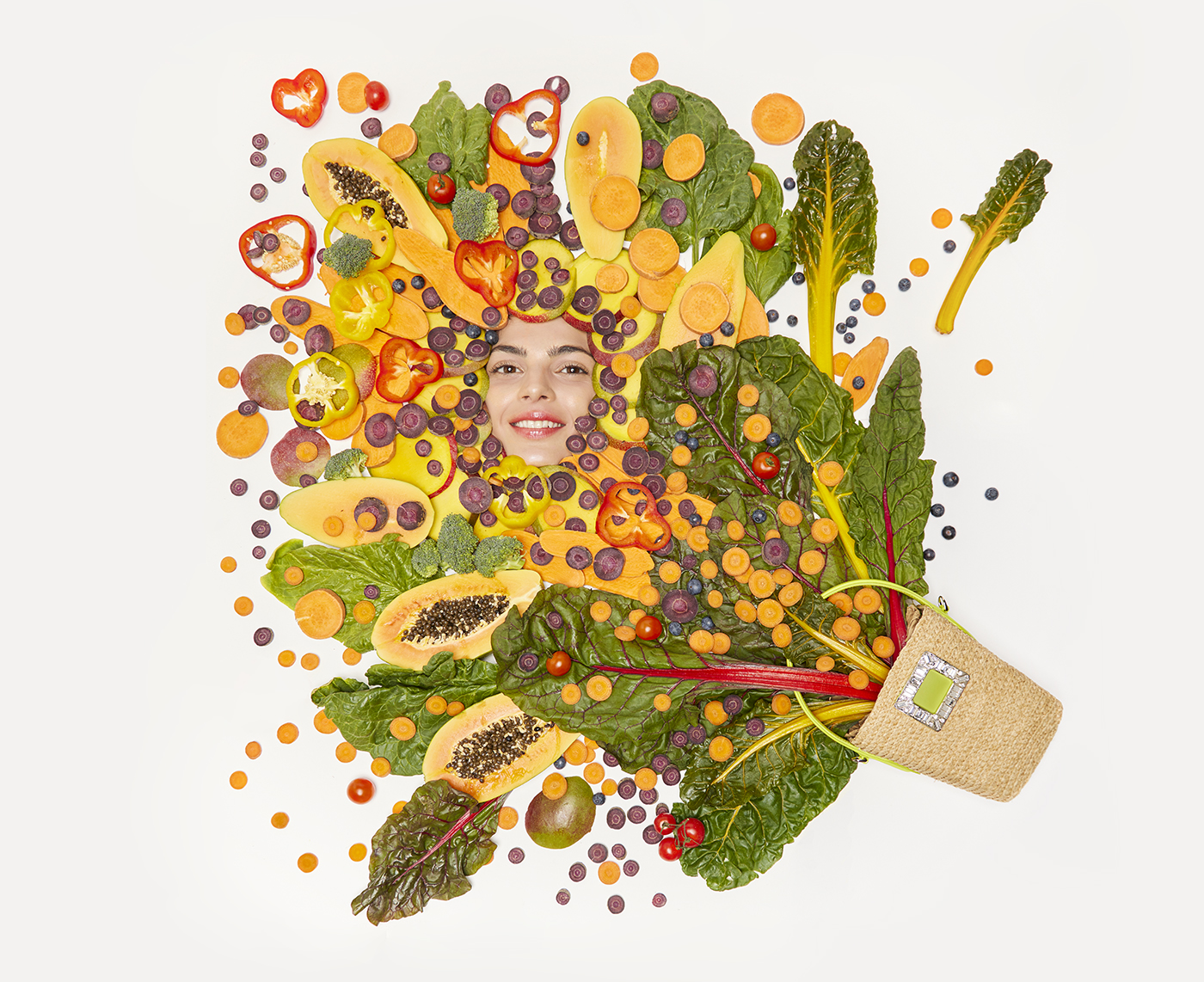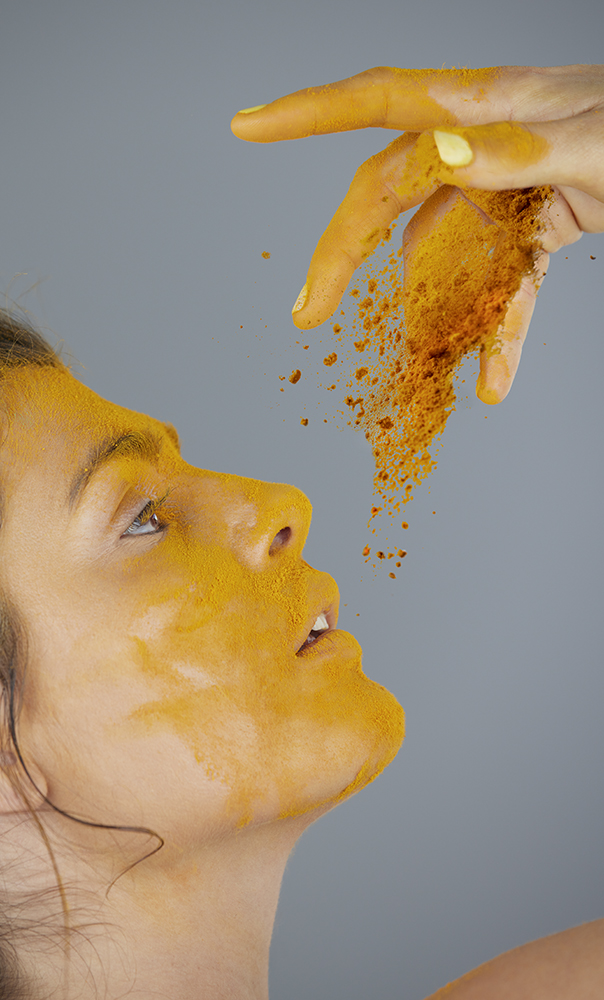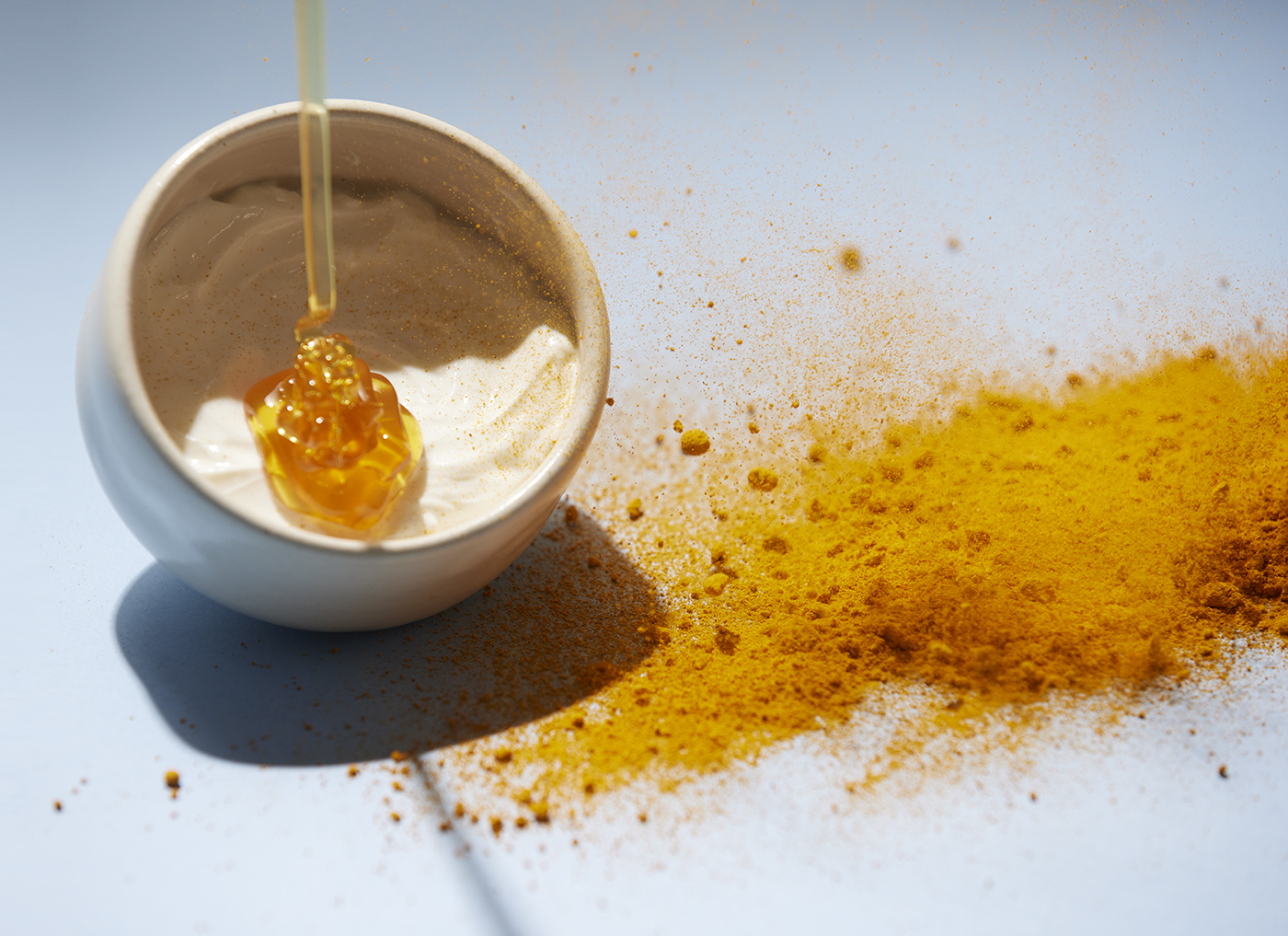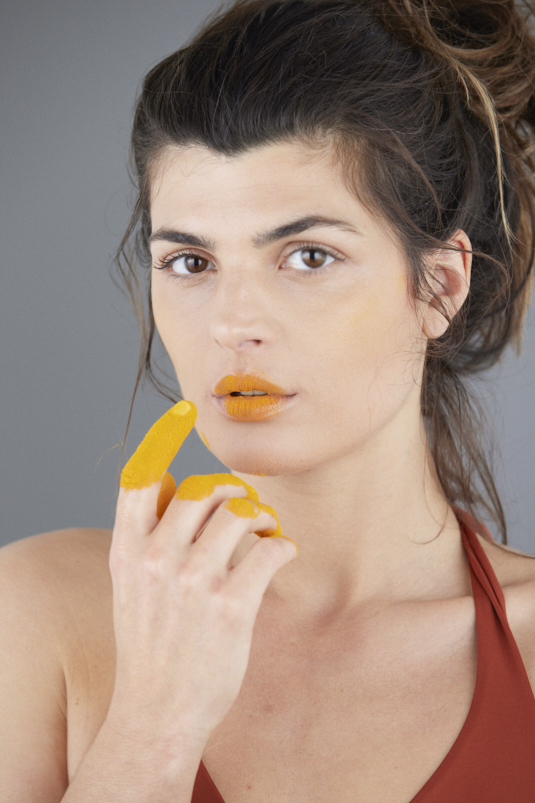The sun, essential for all life on earth, also has harmful effects on our skin in case of overexposure, which can even lead to the development of skin cancers. In order to be able to enjoy the sun optimally a three-step topical and overall skincare routine is called for. Preparation, protection, and repair are key. Dr. Noël Schartz, a dermatologist in Paris, will help you gain a better understanding.
art direction Alexandra Mas, photography Daniel Bésikian, beauty Anne Arnold
featuring Eloise Valli
for Dr. Noël Schartz
1. Sun Rays
The sun, venerated by great civilizations such as the Egyptians, the Aztecs, the Mayas, and many others, is first and foremost a source of energy essential to the development of life on earth. It is the origin of light beams that travel at the speed of light to reach the earth. In one hour it sends more energy to our planet than humanity consumes in one year. There are different types of solar radiation, which have different effects on life: infrared radiation provides us with heat, visible light allows us to see, and ultraviolet rays affect our health.
The sun is beneficial because it regulates the circadian cycle (sleep and wakefulness), improves well-being, and is essential in the production of vitamin D, which is crucial for immunity and bone development.
However, changes in our behavior towards the sun, such as the development of naturistic culture in the early 20th century and the sexual liberation of the 1970s, have led to overexposure to the sun, with the multiplication of sunburns as an illustration. This overexposure causes cellular damage, particularly at the genome level, leading to the appearance of skin cancers. Furthermore, it is the cause of elastin and collagen deterioration, inducing aging of the skin due to exposure to sunlight (photoaging).
The skin’s greatest enemies are ultraviolet rays (UV), notably UVA, and UVB.
- UVB rays are very energetic and penetrate the skin superficially, reaching the epidermis and superficial dermis. They are responsible for long-term tanning but also for sunburns, which among other things cause black skin cancer, melanoma.
- UVA rays are less energetic and penetrate deeply into the skin, reaching the middle dermis. They cause not only immediate tanning but also the formation of free radicals creating oxidative stress leading to skin aging. They are responsible for the appearance of white skin cancers, carcinomas.

bathing suit and sunglasses Max Mara, bag and bow hat Roger Vivier, jewels Maison Mornier
2. Preparation and Protection from the Sun
To counteract the sun’s harmful effects, effective sun protection is essential. That’s why it’s necessary to prepare and protect the skin against future sun exposure.
Skin preparation involves applying antioxidants such as vitamin C, phloretin, ferulic acid, resveratrol, and beta-carotene directly to the skin and ingesting them through food. Beta-carotene is naturally found in fruits and vegetables such as sweet potato, carrot, red pepper, green cabbage, spinach, Swiss chard, and mango. Beta-carotene pigments the skin, giving it a tanned appearance, and scientific studies have shown that it also stimulates the production of melanin, the pigment that protects the cell from the sun’s rays.
The best sun protection is provided by clothing, and seeking shade also has its benefits. However, one must be cautious of the refraction of sunlight on sand, snow, and water. Natural sun protection is often not optimal, so sunscreen provides a real benefit. There are chemical, mineral, and botanical filters available.
Chemical filters represent the majority of filters used in cosmetics. They absorb solar radiation and are only effective after half an hour. Their main disadvantage is their penetration into the epidermis, which can irritate the skin and cause allergic reactions. Some sunscreens also contain endocrine disruptors. Their advantages are their pleasant texture and ease of use.
Mineral filters are very effective. They create a barrier that remains on the skin’s surface and reflects UV and infrared radiation like a mirror. They do not penetrate the skin and therefore provide instant protection against UV. Their main disadvantage is that they don’t feel great on the skin; they are opaque, leaving the skin slightly white, and are difficult to apply.
Botanical filters absorb solar radiation like chemical filters, but without their disadvantages. However, they are only used in combination with chemical and mineral filters because, to date, botanical filters are not recognized by the Cosmetics Regulation. Only a few brands, such as Biologique Recherche, use these filters.
Sunscreens are characterized by their protection factor (SPF). Various tests are necessary to evaluate them and authorize their marketing. These tests are regulated and subject to standards. SPF defines protection against UVB, and UVA-FP defines protection against UVA. In recent years, there has been an emergence of filters that protect against blue light, which is believed to be responsible for photo-aging and the appearance of brown spots.

Skin preparation involves applying antioxidants such as vitamin C, phloretin, ferulic acid, resveratrol, and beta-carotene directly to the skin and ingesting them through food. Beta-carotene is naturally found in fruits and vegetables such as sweet potato, carrot, red pepper, green cabbage, spinach, Swiss chard, and mango. (basket prepared by Soil Food)
bag Roger Vivier
3. Skin Repair
Skin repair can be achieved through topical and general treatments.
During sun exposure, the skin becomes dehydrated, free radicals form, creating oxidative stress. The cell’s DNA is damaged and inflammation sets in, which contributes to the development of skin cancers and aging. Glycation, a chemical phenomenon in which collagen and elastin fibers become rigid, causes and worsens wrinkles.
That’s why it is essential to use an after-sun product that can address these damages. For example, the application of an SPF 50+ sunscreen protects against 50% of sun-induced damage. By adding an antioxidant before or after exposure, we can further reduce the damage by 20 to 30%.
Turmeric, taken orally, is known for its anti-inflammatory, antioxidant, and tissue repair properties. It also appears to have beneficial effects when applied topically. Researchers have demonstrated the effectiveness of turmeric in reducing UV-induced cellular damage in mice: less redness, less inflammation in the dermis, less cellular damage, and increased anti-tumor activity. Turmeric could become an essential ingredient in future sunscreen products.

Turmeric could become an essential ingredient in future sunscreen products.
4. Recommendations
The ideal sun care routine consists of a comprehensive three-step approach: prepare, protect, and repair. Some brands, including Biologique Recherche, offer a complete program of in & out sun care, following these three steps.
Preparation is essential before sun exposure as it promotes the synthesis of melanin without exposure to the sun. By fighting oxidative stress, it prevents the appearance of pigmentation spots and slows down skin aging.
The choice of sunscreen should ideally be in line with the individual’s phototype, geographical location, time of exposure, and skin problems (acne, eczema, etc.), and should also be eco-friendly, reef safe, and free from nanoparticles.
It is essential to use an after-sun product containing an emollient to hydrate the skin, an antioxidant to repair cellular damage, an anti-inflammatory to soothe irritation, and an anti-glycation agent to prevent wrinkles and aging.

Ingredients:
1 teaspoon of turmeric powder 1 teaspoon of honey 2 tablespoons of Greek yogurt
Recipe:
-
Mix the turmeric and honey in a bowl, then add the fresh Greek yogurt.
-
Apply this mask in a thin layer all over your clean and dry face (avoiding the eye area) and leave it on for about ten minutes.
-
Rinse it all off with warm water.
This DIY mask does not stain the skin. It combines yogurt, which has nourishing properties, honey, which boosts healing, and turmeric, which helps reduce inflammation.
It soothes sunburns, hydrates, and repairs the skin.

Discover the benefits of eco-responsible food on health and the environment through the family concept of SOIL.
@soilfood.fr (on Instagram)




